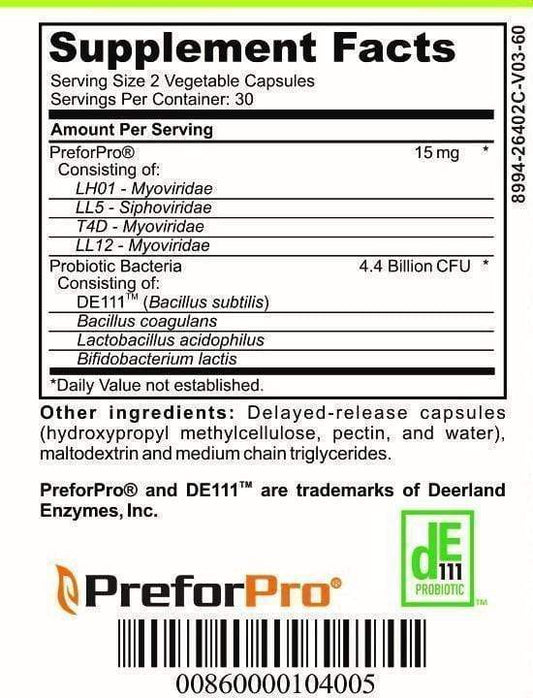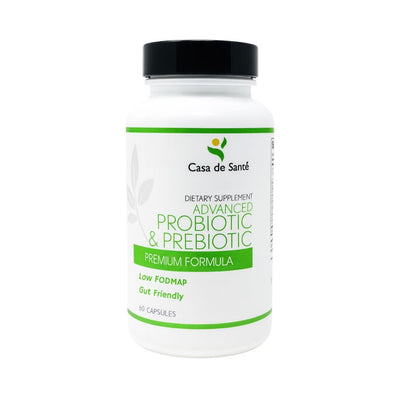Banana Flour Vs Pumpkin Flour
Banana Flour Vs Pumpkin Flour
When it comes to alternative flours, banana flour and pumpkin flour are two popular options that have gained attention for their unique nutritional profiles and culinary uses. Understanding the similarities and differences between these flours can help you make an informed choice about which one is right for you. In this article, we will delve into the various aspects of banana flour and pumpkin flour, including their nutritional values, carbohydrate content, fiber content, protein content, fat content, vitamin and mineral composition, glycemic index, allergenic potential, culinary uses, taste differences, digestibility and gut health benefits, weight management properties, blood sugar control effects, antioxidant capacities, potential health benefits and disease prevention qualities, cost and availability factors, environmental impact and sustainability aspects, shelf life and storage considerations, consumer preferences, and market trends. Let's examine each of these factors in detail.
Understanding the Nutritional Profiles
Both banana flour and pumpkin flour offer unique nutritional profiles that set them apart from traditional wheat flour. Banana flour, made from green bananas, is a rich source of resistant starch, which acts as a prebiotic and supports gut health. It is also high in potassium, vitamin C, and magnesium. On the other hand, pumpkin flour is packed with vitamins A, C, and E, as well as minerals like iron and potassium. Both flours provide an array of beneficial nutrients that can contribute to a well-balanced diet.
In addition to their unique nutritional profiles, banana flour and pumpkin flour also offer other health benefits. Banana flour is known to have a low glycemic index, which means it can help regulate blood sugar levels and provide sustained energy. It is also gluten-free, making it a suitable option for individuals with gluten sensitivities or celiac disease.
Pumpkin flour, on the other hand, is rich in antioxidants, particularly beta-carotene, which is converted into vitamin A in the body. Antioxidants help protect the body against oxidative stress and may reduce the risk of chronic diseases. Additionally, pumpkin flour is high in dietary fiber, which aids in digestion and promotes feelings of fullness.
Comparing the Carbohydrate Content
When it comes to carbohydrates, banana flour tends to have a higher content compared to pumpkin flour. This can be attributed to the natural sugars present in bananas. However, it's important to note that the majority of the carbohydrates in banana flour come from resistant starch, which has a minimal impact on blood sugar levels. Pumpkin flour, on the other hand, contains less carbohydrates overall.
Resistant starch is a type of carbohydrate that is not fully digested in the small intestine. Instead, it passes through to the large intestine where it acts as a prebiotic, feeding the beneficial bacteria in our gut. This can have positive effects on digestion and overall gut health.
In addition to their carbohydrate content, both banana flour and pumpkin flour are also rich in other nutrients. Banana flour is a good source of potassium, vitamin C, and dietary fiber. On the other hand, pumpkin flour is high in vitamin A, vitamin E, and antioxidants. Including these flours in your diet can provide a variety of essential nutrients.
Examining the Fiber Content
Fiber is an essential component of a healthy diet, aiding in digestion and promoting feelings of fullness. In terms of fiber content, both banana flour and pumpkin flour offer impressive amounts. Banana flour is particularly rich in resistant starch, a type of fiber that resists digestion and provides benefits to gut health. Pumpkin flour, while not as high in resistant starch, still provides a substantial amount of dietary fiber that can support digestive function.
Furthermore, the fiber found in banana flour and pumpkin flour can also help regulate blood sugar levels. The soluble fiber in these flours slows down the absorption of glucose, preventing spikes in blood sugar and promoting stable energy levels throughout the day.
In addition to its digestive benefits, fiber has also been linked to a reduced risk of chronic diseases such as heart disease, diabetes, and certain types of cancer. By incorporating banana flour or pumpkin flour into your diet, you can increase your fiber intake and potentially improve your long-term health outcomes.
Analyzing the Protein Content
Protein is crucial for building and repairing tissues, as well as supporting various bodily functions. Banana flour contains a moderate amount of protein, while pumpkin flour typically contains slightly more protein. Incorporating these alternative flours into your recipes can contribute to your overall protein intake, especially if you're following a plant-based diet.
Uncovering the Fat Content
When it comes to fat content, both banana flour and pumpkin flour are relatively low in fat. This makes them suitable options for those watching their fat intake or following a low-fat diet. However, it's important to note that the fat content of these flours may vary slightly depending on the brand or specific product.
Evaluating the Vitamin and Mineral Composition
Both banana flour and pumpkin flour offer an array of vitamins and minerals that can contribute to overall health. Banana flour is particularly rich in potassium, vitamin C, and magnesium. Pumpkin flour, on the other hand, provides significant amounts of vitamins A, C, and E, as well as minerals like iron and potassium. Incorporating these flours into your recipes can be a great way to boost your nutrient intake.
Gauging the Glycemic Index
The glycemic index (GI) measures how quickly a food raises blood sugar levels. Banana flour has a relatively low glycemic index due to its high resistant starch content, making it a good choice for those looking to manage blood sugar levels. Pumpkin flour also has a moderate GI, but its overall impact on blood sugar levels may differ depending on the specific recipe or combination of ingredients used.
Delving into Allergenic Potential
One of the advantages of alternative flours like banana flour and pumpkin flour is that they are naturally gluten-free. This makes them suitable options for individuals with gluten sensitivities or celiac disease. However, it's important to note that they may still pose allergenic potential for some individuals, so it's always best to check for any personal allergies or sensitivities before incorporating these flours into your diet.
Exploring Culinary Uses and Taste Differences
Both banana flour and pumpkin flour can be used in a variety of culinary applications. Banana flour is often used in baking as a substitute for traditional wheat flour, adding a subtle sweetness and moisture to recipes. It can also be used to thicken sauces or as a gluten-free coating for frying. Pumpkin flour, on the other hand, is commonly utilized in savory recipes like soups, stews, and bread. It imparts a unique nutty flavor and adds richness to dishes.
Assessing Digestibility and Gut Health Benefits
Thanks to their fiber content, both banana flour and pumpkin flour can contribute to improved digestion and gut health. The resistant starch in banana flour acts as a prebiotic, promoting the growth of beneficial gut bacteria. Pumpkin flour, although not as high in resistant starch, still offers digestive benefits due to its fiber content. Incorporating these flours into your diet can support a healthy digestive system.
Examining Weight Management Properties
For individuals looking to manage their weight, both banana flour and pumpkin flour can be valuable additions to their diet. The fiber content in these flours promotes feelings of fullness, which can aid in portion control and reduce overeating. Additionally, the resistant starch in banana flour has been shown to have potential weight management benefits by increasing fat oxidation and reducing hunger hormones.
Investigating Blood Sugar Control Effects
Blood sugar control is a critical aspect of managing conditions like diabetes. Both banana flour and pumpkin flour have properties that can help regulate blood sugar levels. The low glycemic index of banana flour, coupled with its resistant starch content, can contribute to stable blood sugar levels. Pumpkin flour, though moderately glycemic, is still a better alternative to high-glycemic flours for individuals with blood sugar concerns.
Unveiling Antioxidant Capacities
Antioxidants play a vital role in protecting the body against oxidative stress and reducing the risk of chronic diseases. Banana flour is rich in vitamin C, a powerful antioxidant that helps neutralize free radicals in the body. Pumpkin flour, on the other hand, contains vitamins A, C, and E, as well as other compounds that possess antioxidant properties. Incorporating these flours into your diet can provide an added antioxidant boost.
Studying Potential Health Benefits and Disease Prevention Qualities
Both banana flour and pumpkin flour offer potential health benefits and disease prevention qualities. Banana flour's resistant starch content has been linked to improved insulin sensitivity, reduced inflammation, and enhanced digestive health. Pumpkin flour, on the other hand, has been associated with better eye health, immune function, and heart health due to its vitamin and mineral composition. These flours can be valuable additions to a balanced diet.
Comparing Cost and Availability Factors
When considering alternative flours, cost and availability are important factors to consider. Banana flour and pumpkin flour are generally more expensive than traditional wheat flour due to the specialized production process and limited availability. However, the accessibility of these flours may vary based on location and supplier. It's essential to check local grocery stores, health food stores, or online retailers for availability and pricing.
Exploring Environmental Impact and Sustainability Aspects
The environmental impact and sustainability of different food choices are increasingly relevant in today's world. Banana flour production requires minimal resources and produces less waste compared to traditional wheat flour. Additionally, utilizing green bananas that may otherwise go to waste contributes to reducing food waste. In the case of pumpkin flour, utilizing pumpkins that would otherwise be discarded after Halloween or other holidays can help minimize food waste and support sustainable practices.
Analyzing Shelf Life and Storage Considerations
Shelf life and proper storage are essential considerations for any food product. Both banana flour and pumpkin flour have reasonably long shelf lives when stored correctly. It's important to keep these flours in airtight containers in a cool, dry place to maintain their quality and prevent moisture or pests from affecting them. Checking for any specific storage recommendations provided by the manufacturer is also advisable.
Discussing Consumer Preferences and Market Trends
Consumer preferences and market trends play a significant role in shaping food choices. Today, there is an increasing demand for alternative flours due to various dietary preferences, including gluten-free, paleo, or vegan diets. As a result, the availability and variety of alternative flours like banana flour and pumpkin flour have expanded. It's essential for manufacturers and retailers to stay abreast of current consumer demands and adapt their offerings accordingly.
Making an Informed Choice: Which Flour is Right for You?
When it comes to choosing between banana flour and pumpkin flour, there is no definitive answer. Both flours offer unique nutritional profiles, culinary uses, and health benefits. Consider your dietary needs, taste preferences, and any specific health concerns when making a decision. It may also be worthwhile to experiment with both flours to determine which works best for you and your lifestyle. Regardless of your choice, incorporating alternative flours like banana flour and pumpkin flour can add variety and nutritional value to your meals.
Now that you have a comprehensive understanding of banana flour and pumpkin flour, you can confidently explore these alternative flours and discover new possibilities in your culinary endeavors.




























